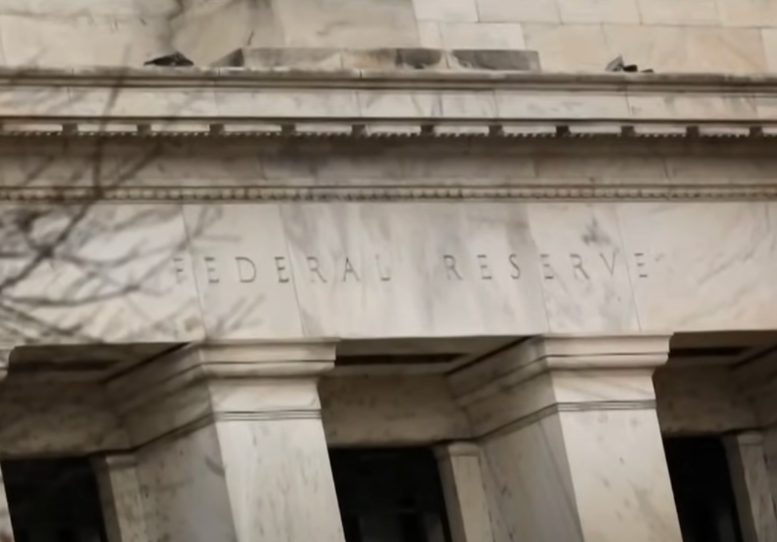News
The Fed’s September Rate Cut: A Case of Too Big Too Soon?

Source: YouTube
Last month, the Federal Reserve made a bold move by cutting overnight lending rates by 50 basis points, aimed at fostering economic growth. However, the release of September’s jobs report—showing 254,000 new jobs and a drop in unemployment to 4.1%—has raised concerns among experts. Many argue that the Fed may have acted prematurely and with too large a cut, might be risking potential inflation.
Former Treasury Secretary Larry Summers is among the critics, warning that the rate cut could stoke inflation in an already resilient labor market. According to Summers, with strong job growth and rising wages, the Fed should have exercised more caution. The wage growth rate of 4% year-over-year indicates increased consumer spending power, which can drive up prices. This scenario suggests that aggressive rate cuts could overheat the economy rather than provide the intended stability.
Market Reactions and Potential Downsides
The Fed’s rationale for the rate cut was to make credit more affordable, thereby encouraging consumer spending and investment. But with the economy already performing well, further easing may lead to unintended consequences. Experts like Summers point out that a strong labor market typically requires less stimulus, and in this case, easing rates could actually drive up inflation, undermining the Fed’s longer-term goals.
Initially, Wall Street welcomed the rate cut, with stock prices hitting new highs as investors interpreted it as a sign of strong support for growth. However, following the latest jobs data, expectations have shifted. Futures tied to the Fed’s rate show reduced probability of another aggressive cut in November. Many traders now anticipate a smaller, quarter-point cut—or even a pause. The bond market also responded, with Treasury yields reversing their downward trend. This reflects growing caution about potential inflation risks. Analysts like Ian Lyngen from BMO Capital Markets suggest that if the labor market remains strong, further rate cuts could exacerbate inflation concerns.
Former Treasure Secretary Larry Summers: Too Aggressive, Too Risky
Larry Summers, a prominent American economist who served as Treasury Secretary under President Bill Clinton, shared his feedback on the September rate cut.
The Harvard professor and former Director of the National Economic Council under President Barack Obama, is well-known for his views on economic policy, often contributing to discussions on monetary policy, inflation, and fiscal strategy.
In reaction to the Fed’s September rate cut, Summers expressed strong concerns, arguing that the 50 basis point reduction was both too aggressive and potentially risky. He suggested that with a robust jobs report showing 254,000 new jobs and wage growth of 4% year-over-year, the economy was already performing well, and the cut could actually lead to unintended inflationary pressures. He emphasized the need for caution, suggesting that the Fed might have been better served by a more gradual approach to rate cuts in light of the strong labor market. He underscored that such a large cut could overheat the economy rather than support stability, highlighting the potential for increased inflation if wage growth continues at this pace.
The Potential Downside of the September Rate Cut
Critics of the September rate cut warn that it could have negative repercussions. As the Fed continues to lower rates, there’s a risk that inflation could spiral if wage growth accelerates further. When inflation rises, consumer purchasing power can decline, eroding the value of savings. Additionally, the continued ease in monetary policy could create speculative bubbles, as cheap credit leads to overvaluation in stocks and real estate.
Furthermore, with borrowing becoming increasingly affordable, consumers and businesses may take on excessive debt. If the economy were to slow, such debt could become unsustainable, leading to increased defaults and potential financial instability. By prioritizing growth over caution, the Fed may inadvertently set the stage for longer-term economic challenges. As the November meeting approaches, these potential risks will likely influence discussions on future rate policies.
Long-Term Implications of the September Rate Cut
The broader concern with aggressive rate cuts is the potential impact on the economy’s future resilience. A lower-rate environment could hinder the Fed’s ability to respond to future crises, as there would be less room to cut rates further if the economy were to experience a downturn. Furthermore, inflationary pressures could lead to sudden shifts in monetary policy, forcing the Fed to raise rates quickly and risk disrupting economic stability. This delicate balance of stimulating growth while controlling inflation is crucial, and the Fed’s next moves will be pivotal for shaping the economic outlook.
What’s your take on the September rate cut? Was it too early, too big, or both? Let us know what you think.



